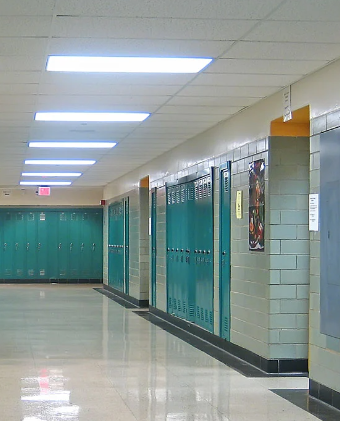There are many things we can do to use less energy and use it more wisely. These things involve energy conservation and energy efficiency. Although many people use these two terms interchangeably, they have different meanings.
Energy conservation is any behavior that results in the use of less energy. Energy efficiency is the use of technology that uses less energy to perform the same function. Installing an LED light bulb in place of a fluorescent bulb is an example of energy efficiency. The LED gives off the same amount of light, but uses less energy.
Recently, our district purchased LED plug and play T8 bulbs for $6.30 more per bulb than what we could have purchased the traditional fluorescent T8 bulbs (common in many schools). The typical reaction when hearing we bought these new bulbs is, “How does it make sense to spend more money for a LED?” There is more than one reason. First, LED bulbs last 3x longer. That means less time commitment from staff to replace burned out bulbs. Second is money. LEDs use ½ the energy as the fluorescent to produce the same light. If the lights are on 12 hours per day (think of any hallway in any school), the payback is less than one year. By spending more money on more efficient bulbs, you end up spending less overall because of the reduction in your utility costs.
With just 100 bulbs, the savings (including purchase price) is over $300 in year one and $1,000 in year two. I have 24 fixtures and 48 bulbs just in my classroom. When you consider how many T8 fluorescent bulbs there are in most schools, and begin to crunch numbers, you quickly realize that it can make a lot of sense to spend more cents on an efficiency upgrade such as this.

Learn more about energy efficiency, energy conservation, and “Facts About Light” with NEED’s free energy curriculum! Available for free PDF download or as an e-publication.
- School Energy Inspectors (Elementary 3-5)
- Building Science (Intermediate 6-8)
- School Energy Experts (Intermediate 6-8)
- School Energy Managers (Secondary 9-12)

Author Bio: Jim Brown has over 25 years teaching experience at the middle school level, and has carved out a niche as a STEM teacher and a certified energy manager, specializing in energy management and auditing of educational facilities. Jim is also a NEED teacher and facilitator. Follow Jim Brown
